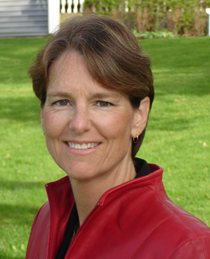Diana Hopkins-Rosseel PT, DEC, BSc(PT), MSc(Rehab), Clinical Specialist (Cardiorespiratory)

Clinical specialty area: Cardiorespiratory
Years in specialty practice area: 28
Why did you choose to become a clinical specialist?
There are many reasons why I chose to pursue the process of becoming a Clinical Specialist in Cardiorespiratory. A limited list would include: 1) Support the inaugural process, 2) Enhance professional development options within the profession, 3) Begin the process of providing the profession with mentors in the clinical areas of practice, 4) Challenge myself.
How do you feel the clinical specialization role has changed your practice and what new opportunities/roles/responsibilities do you think you will take on as a specialist?
It has put questioning my critical thinking and clinical reasoning skills at the forefront, not only of my own practice, but of our whole team’s interactions and practice. I ask “why?”, not only to myself, but with the team and the patients every day, and then pursue the evidence-base for the answers.
What are important things to consider for those who are interested in pursuing their clinical specialist?
Investigate the process and the rationale for becoming a Clinical Specialist early in your career, write down a plan for moving towards the designation and then DO IT!
I ask ‘why?’, not only to myself, but with the team and the patients every day, and then pursue the evidence-base for the answers.
Biography
Diana Hopkins-Rosseel, PT, DEC, BSc(PT), MSc(Rehab), Clinical Specialist (Cardiorespiratory)
Diana is a tenured full Professor in the School of Rehabilitation Therapy at Queen’s University and a physiotherapist at the Cardiac Rehabilitation Centre in Kingston, Ontario, Canada. Diana was awarded the designation of Clinical Specialist in Cardiorespiratory Physiotherapy in Canada in 2012, University of Toronto Alumni Achievement Award in 2013, the 2014 Canadian Association of Cardiovascular Prevention and Rehabilitation Award in Knowledge Transfer and the Canadian Physiotherapy Association’s Life Membership Award, June 2015. Diana’s research portfolios include simulation in interprofessional education, professional practice in physiotherapy, and behavioural modification, best practices and development and validation of a risk triage tool in cardiovascular rehabilitation and cardiovascular rehabilitation as a chronic disease prevention and management paradigm. Diana has over a hundred peer-reviewed podia and numerous peer reviewed publications as well as being a book author, contributor to the Canadian Guidelines for Cardiac Rehabilitation and Cardiovascular Disease Prevention and the Cardiac Care Network of Ontario Standards for Cardiovascular Prevention and Rehabilitation.
